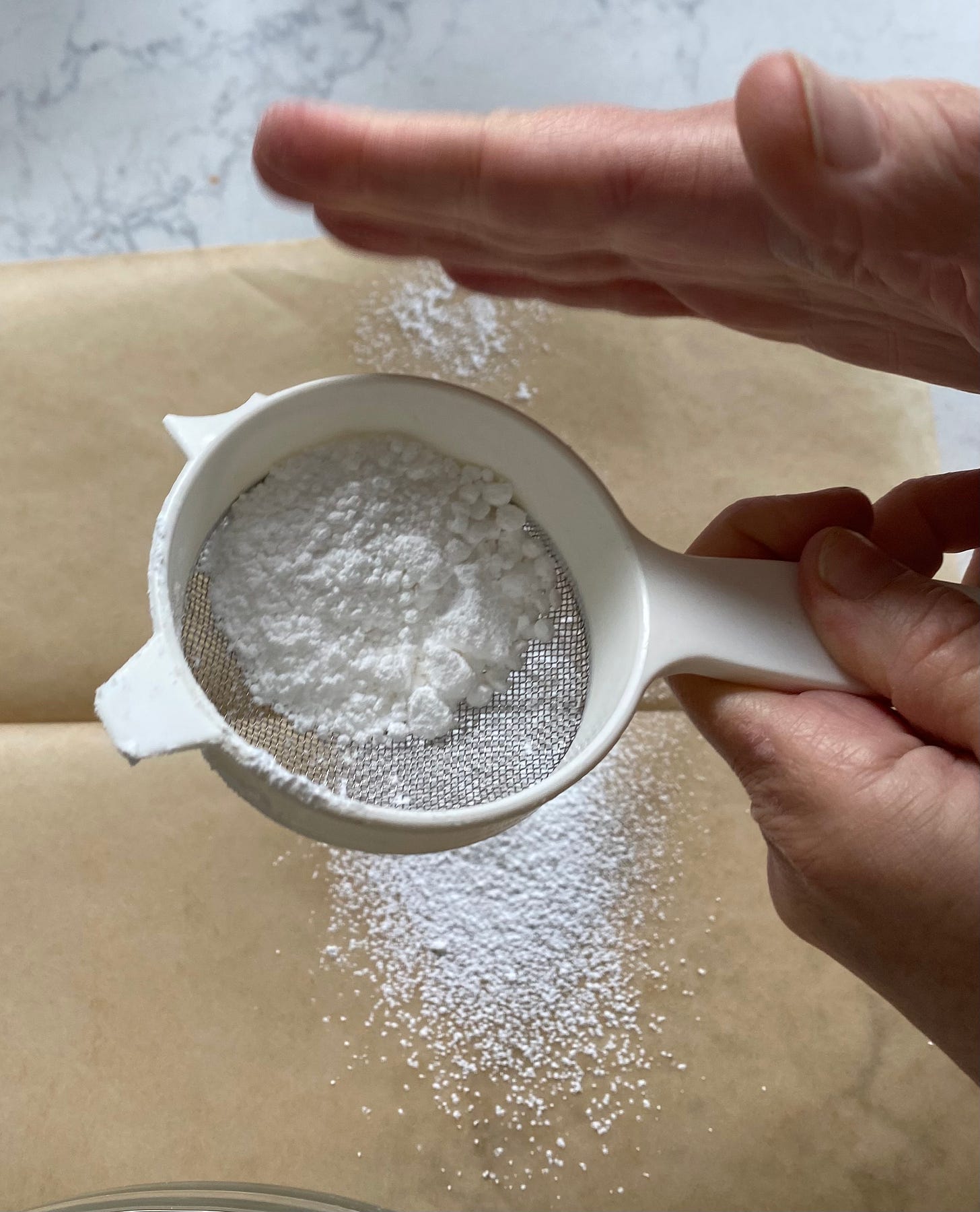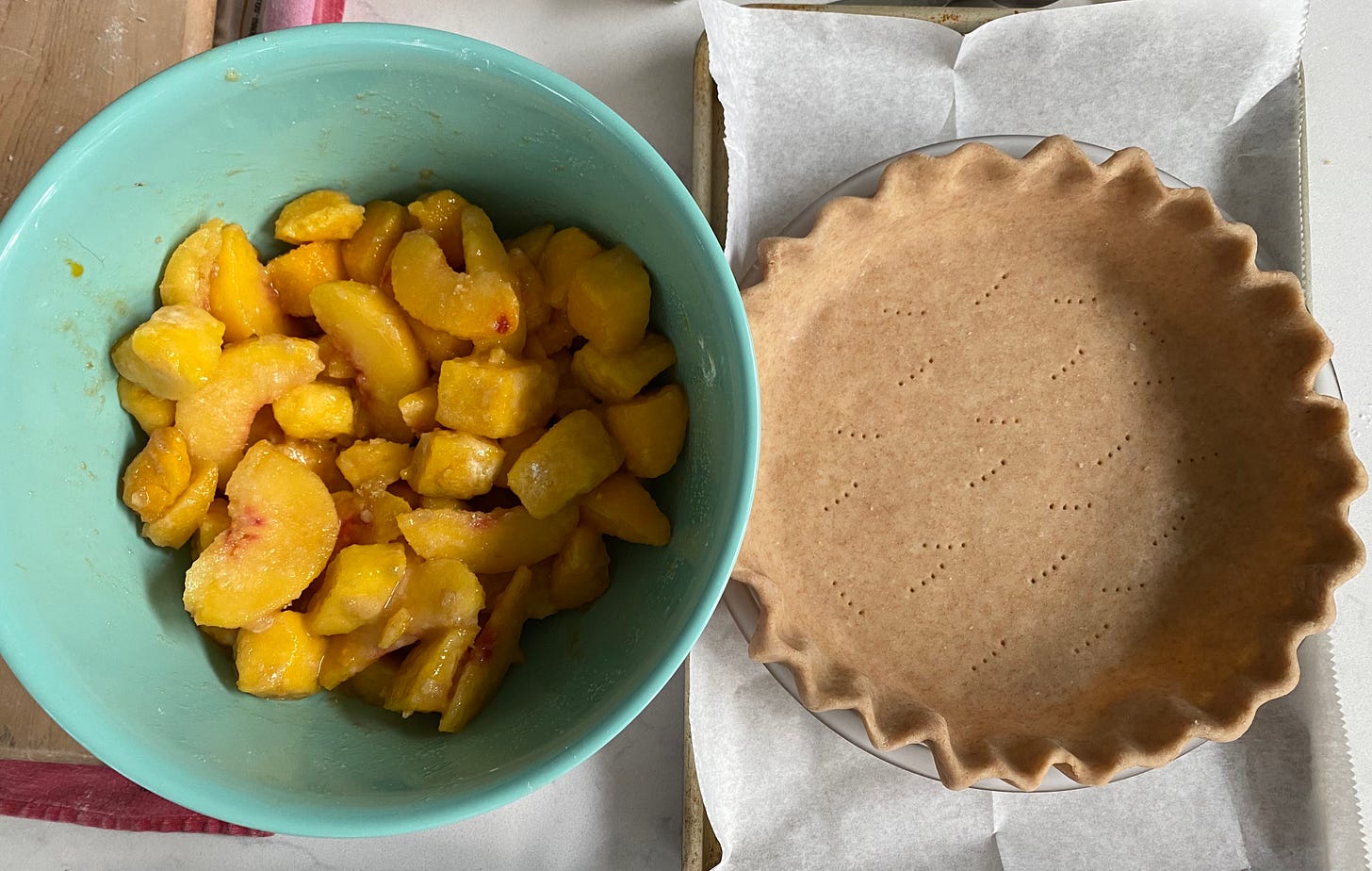Your Baking Questions Answered
This week: How to sub whole wheat and oat flour in recipes, plus, to sift or not to sift?
Last week, one of my readers wrote with a slew of great baking questions, including: Why use whole wheat flour instead of all-purpose? Can you substitute oat flour for wheat? Does flour need sifting or whisking and why?
Starting today, Your Baking Questions Answered will be a regular weekly feature going forward, so please leave your queries below. From ingredients to techniques, no question is too silly. If you have the question, surely many others do too. I look forward to hearing from you.
And while you’re here, would you please click the like button above to make the Algorithm Monster happy? Thank you!
To Sift or Not Sift
Older recipes always called for sifting because methods of grinding and processing wheat were not as advanced as now. Flour now comes pre-sifted, so there’s no reason to whisk it further. I do use a hand whisk to combine dry ingredients because the whisk not only mixed, but helps aerate the blend.
If you are making a more delicate creation, such as a genoise (sponge) cake or an angel food cake, I recommend sifting the flour to ensure a lighter batter.
If you haven’t used your flour in a while, give it a stir before measuring to help loosen it up. Better yet, always use a scale to measure your ingredients to ensure you get a consistent result! Consider that a cup of flour that is sifted before measuring weighs 20 to 30 percent less than an unsifted one.
What I Sift
I always sift cocoa and confectioners’ sugar as both have a tendency to clump. I don’t have an actual sifter, and instead use a sieve over a piece of parchment paper. The trick? Fold the parchment paper in half, then unfold it and sift over that. When it’s time to empty the ingredient into the bowl, the crease acts like a funnel and guides the powder in
When A Recipe Calls For Sifted Ingredients
If a recipe calls for sifted flour, read the recipe carefully.
1 cup sifted flour means the flour needs to be sifted BEFORE measuring
1 cup flour, sifted means the flour needs to be measured and THEN sifted.
Love your commas and hug a copy editor today!
Whole Wheat Flour
Anybody who has been reading my recipes for a while knows I have a thing for whole wheat flour in recipes, from pie crust to chocolate chip cookies. I started substituting in whole wheat flour for added nutrition in baked goods. This was when my kiddos were toddlers, because maybe-just-maybe, their diets were not as balanced as one might expect from kids whose ma had trained as a chef. (Oh ugh and fie on all the well-meaning but annoying advice givers who suggested ways to improve my kids’ diets. Nope. I tried. I just had to wait and let time takes its course.)
But I digress.
The reason I really love to use whole wheat flour is the nutty, rich flavor it adds. It also helps tamp down some of the sweetness in baked goods, and I’ve come to prefer it. Try one of my chocolate chip cookie recipes that uses whole wheat flour and see if you can tell the difference.
How to Substitute
Substituting whole wheat flour for part of the all-purpose flour is easy. The best way to ensure reliable results is to swap out half of the all-purpose for whole wheat flour. So, if a recipe calls for 1 1/2 cups of all-purpose flour, use 3/4 cup all-purpose and 3/4 cup whole wheat.
You know how I am always begging you to weigh your ingredients? In the case of this substitution, I actually recommend using volume, because all-purpose flour is heavier by volume than whole wheat:
All-purpose flour = 120 grams per cup
Whole wheat flour = 113 grams per cup
Not surprisingly, the more whole wheat flour you add, the more you’ll taste it. If you choose to substitute all whole wheat for all-purpose in cookies, refrigerate the dough for at least an hour to let the flour absorb some moisture, and not feel as grainy. If you can wait, let it rest overnight in the fridge.
I use regular whole wheat flour in my recipes. I prefer it to white whole wheat, which is milled from soft winter wheat. People claim the white whole wheat is less noticeable in baked goods, but I think it has more of a bitter quality to it. You do you! The substitutions are the same.
Try an old-fashioned sugar cookie made with whole wheat flour
Try the whole wheat pie crust with this mango-peach ginger pie.
Oat Flour
This gluten-free wonder is just finely milled oats. You can buy it ready ground, or grind old-fashioned oats yourself in a food processor or good blender until powdery.
You can substitute oat flour for white or whole wheat flour. I love, love, love it in cookies and muffins because it adds a lush sweetness and creates a delicate crumb. I am currently working on a cider donut cake, and oat flour helps create the texture of a donut.
Oat flour is also not too shabby nutrition-wise, and along with being gluten-free, it’s higher in fiber and protein than regular flour.
How to Substitute:
Oat flour is lighter than regular flour and you can substitute as much as you’d like for regular flour, although I would start at half-wheat/half-oat flour to make sure you like the texture and taste.
If you measure by volume:
1 1/4 cup of oat flour = 1 cup of all-purpose flour
1 cup of oat flour = about 92 grams
Try these peanut butter oatmeal chocolate chip cookies made with regular, oat and whole wheat flours
What burning questions about cooking do you have? What are you burning by the way? Is it because your using the wrong type of baking pan? Whatever your questions, large or small, please leave them here!
This substack is a reader-supported publication. I cannot do it without you. If you’re able, paying for a subscription helps keep the oat flour fresh and helps pay for the groceries necessary for recipe-testing and recipe development. Also, it supports me—a freelance writer. The pay scale for journalists and writers has not kept up with the cost of living. That’s why having a substack newsletter has become such a terrific venue for so many writers. Best of all, however, it puts me, Bosco, Calvin and Clyde in touch with our readers like never before. Thank you.
Can’t afford a subscription? Do the next best thing and give free subscriptions to all your friends. The more the merrier.










I can't remember when I started using a food scale, but it's SO much better than volume measurements—not only is it more accurate, but there are far fewer things to clean when you're done. I love putting my mixing bowl on the scale and tossing things in. (maybe I need to get a life, but whatever).
I always try to substitute smashed up Snickers for anything, as you know, Marissa. But your formula works good too.